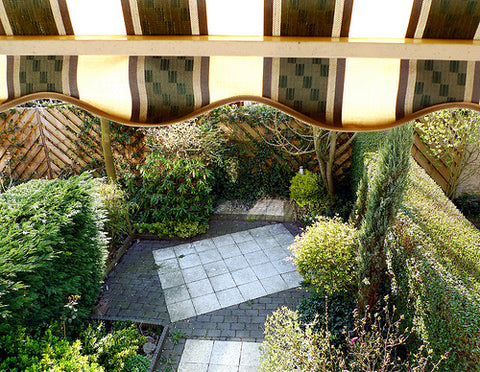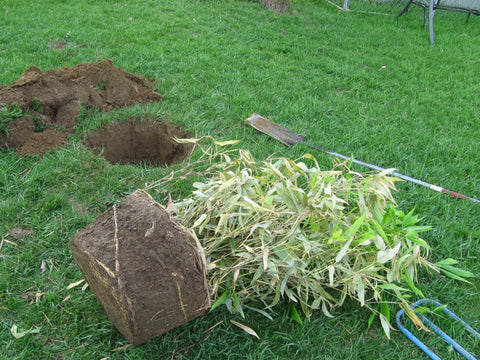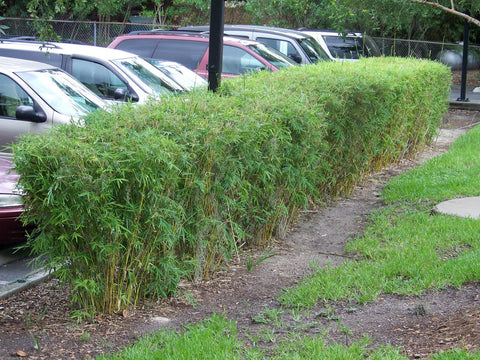How To Plant & Care For Multiplex Hedge Bamboo
It is no longer a surprise that bamboo is becoming more and more popular for home owners and their various landscaping projects, as well as for their indoor décor. However, what may be still surprising for those of you who don’t know too much about this plant, is the number of species that exist. For now, we’ll introduce you the Multiplex Hedge Bamboo, which is one of the fastest growing and most reliable clumping bamboo species that we have.

The Best Choice For Hedges
Let’s say you planned to create a hedge or privacy screen consisting of bamboo plants. Now, it is the moment to choose the species of bamboo that you wish to use for your project. Our recommendation is the Multiplex Hedge Bamboo, as it is mostly known for its capacity to create lush, thick hedges, which you’ll definitely love.
Multiplex Hedge Bamboo has a relatively short stature, at least in comparison to other timber bamboo species, and this is what makes it a perfect choice for using it as a hedge. When properly cared for, this bamboo creates a wonderful hedge that is thick enough to allow for plenty of privacy, yet still allow a nice breeze to blow through. In less than two years, your living hedge can reach up to 15 feet tall.
Meet Multiplex Hedge Bamboo
On its original name Bambusa Multiplex, this species is a superior hedge bamboo with deep green color and pencil thin culms. This species is resistant to cold and is a low maintenance variety. One interesting aspect is that when a culm is cut, it stops from growing any taller, and the leaves branch out wider instead.
Originating from China, Multiplex Hedge Bamboo grows very fast and dense, therefore it is perfect to be used for hedges. It is also very hardy, which is another advantage for using it for creating a hedge.
Special Recommendations
Multiplex Hedge Bamboo loves full sun and it is very drought resistant. Regarding watering, more water means more growth. However, standing water may result in rotting of the rhizome of the bamboo plant, which causes the plant to die.

In order to keep your Multiplex Hedge Bamboo looking its absolute best and provide the optimum amount of nutrients, we recommend a once yearly application of 13-3-13 Bamboo Special. Bamboo Special is the only fertilizer that we use at the Bamboo Plants Online farm, and with good reason. This high nitrogen, controlled release fertilizer is completely organic and “Florida Friendly”, which means that it won’t find its way into the local water supply where it could become a problem.
Although this type of bamboo is extremely hardy, it can easily get damaged by the wind. In such cases, the plant’s leaves may start to fall off, yet this doesn’t cause the plant’s death. We have personally seen cases where a bamboo plant lost its leaves and regrew them within just a couple of weeks. If you are concerned that wind damage may be an issue, then simply choose a spot in the yard that provides a bit of a windbreak or protection against the elements (while still allowing the plant to receive the sun, water and nutrients that it needs).
How To Plant & Care For Multiplex Hedge Bamboo
Multiplex Hedge Bamboo will absolutely thrive in full sun, however, it is also known to do well in partial shade as well. When planting with the goal of creating a hedge or privacy screen, you should space the bamboo plants on four-foot centers (i.e. 4 feet apart). Since bamboo is one of the fastest growing plants in the world, you can easily have a fully mature screen or hedge within 2-5 years.

Planting & Transplanting
The very first thing you must do before planting your bamboo is decide where you wish to place it. Depending on the bamboo variety, you may wish to choose a spot that receives more or less sun throughout the day, has some shelter from the elements of rain and wind, or has well-draining soil.
Multiplex Hedge Bamboo, like most bamboo, loves water. However, bamboo is not a plant that enjoys ‘wet feet’. Being located in standing water or permanently boggy soil can quickly lead to root rot and the death of your bamboo. When choosing a location for your bamboo, it is important to choose and area that receives plenty of water, yet is not subject to standing water. It is also important to ensure that your soil provides plenty of drainage to ensure that the roots are receiving the water they need and excess water is absorbed.
It is especially important that young plants receive plenty of moisture. So for the first year or 2, you should water or irrigate your Multiplex bamboo plants 3-5 times a week. Afterwards, you only need to water it when it gets during times of drought or intense heat.
When To Plant
Sub-tropical bamboo can be planted year round. However, the 2 most favorite times to plant are in early spring and fall. Planting during the early spring gives the plant just enough time to get settled in and gather its energy before the annual shooting season begins (generally from May to September). People are often surprised at the amazing growth of their bamboo during its first shooting season.
From early fall to winter is also another favorite time to plant bamboo. While you won’t see much growth during this period, planting between early fall and winter provides the plant with plenty of time to expand its roots and gather its energy before the spring shooting season begins. Our sub-tropical bamboo varieties can be planted year round, however, for the more cold sensitive varieties, you may wish to winter them indoors and move them outside in the spring.
Here we will show you what steps you need to follow when planting multiplex hedge bamboo:
- Dig the hole - First think about the site where you’ll plant the bamboo – whether in the ground, a pot or other container. However, keep in mind that it requires a full to partial sun, and it needs to be provided moist, well-drained soil. The hole should be at least twice the size root ball.
- Mulch - By digging a hole that is at least twice the size of the root ball you intend to plant, you have left enough room to add some organic mulch to the bottom of the hole. This ensures that there is plenty of room for water to drain past the plants’ roots, as well as provides plenty of additional nutrients to the plant. Bamboo is known to respond best to organic materials, such as compost, peat or wood chips. In addition, bamboo is not a very salt tolerant plant, which means it is probably best to avoid mulches that contain seaweed.
- Water the root ball – Before placing your bamboo into your prepared hole, it is best to remove the pot that it arrived in, and thoroughly water the root ball by allowing it to sit in a bucket of water for 30-60 seconds. For optimum results, we recommend adding Recharge Soil Conditioner for Bamboo to the water that you use. Shipping is stressful to plants and by providing as much nutrition as possible during the planting and transplanting process, you can help your bamboo replenish the nutrients lost.
- Place the plant – When you order from Bamboo Plants Online, we ship your bamboo in 1 or 3 gallon containers (complete with our own special soil mix). This makes planting a breeze, since all you have to do is place the entire root ball (minus the container) upright in your prepared hole and ensure that it is as vertical as possible. Try and make sure that your bamboo is planted at the same depth as it was in the pot. If there are any shoots just beginning to come up, ensure that the shoot tips are above ground.
- Backfill the hole – When using yard soil, it is best to completely mix your soil 50/50 with mulch. This ensures that well-draining soil surrounds the plants roots. In addition, it also provides nutrients to the plant and makes it so that the plants’ roots can easily grow and break through the surrounding dirt. Backfill the hole with the 50/50 soil mixture and apply enough water to make sure all air pockets are removed (if using Recharge, you can simply dump the remains of the bucket you used to soak the plants’ roots with). Remove any debris – such as grass and stones – and break up any dirt clumps completely. Place mulch around each plant to a depth of 2”-3”.

Annual Care
Many bamboo varieties are amazingly easy to care for after their initial planting. In order to ensure that your bamboo looks spectacular year-round, however, there are a couple of things you should do annually:
- Apply a once yearly, controlled release, high nitrogen fertilizer (such as Bamboo Special).
- Irrigate or water regularly for at least the first year or two. Afterwards, only during times of drought or intense heat. If you want to ensure maximum grow potential is reached, then you may choose to irrigate 3-5 times weekly beyond the first 2 year period.
- For hedges and screens, it is best to do a once yearly pruning during late summer or early fall. For hedges, this is as simple as trimming the plants to the desired height annually. For screens or centerpiece bamboos, it is a good idea to prune the old and dead culms. This gives your bamboo plants a more tidy appearance, as well as diverts energy that the plant would otherwise use on dead and old culms into producing more culms, height and growth.
Get Multiplex Hedge Bamboo Today (Buy 1 Get 1 FREE)!
photo credit: a busy garden via photopin (license)

